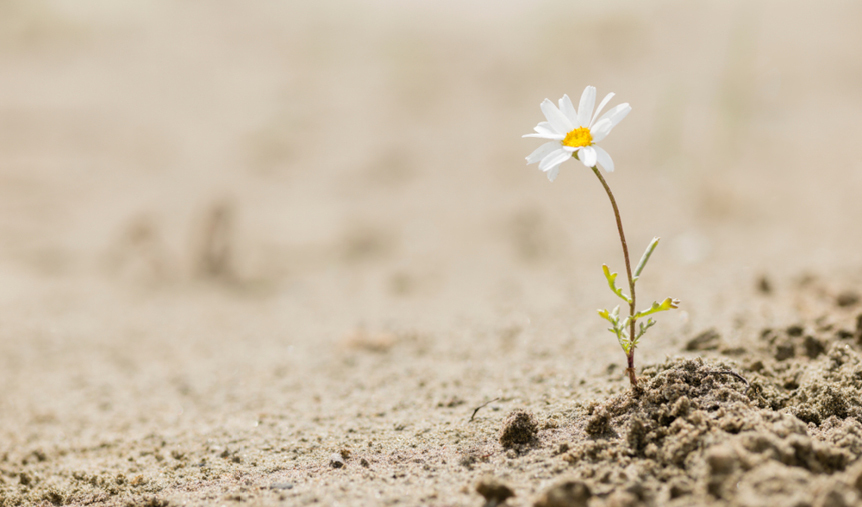When it comes to habits and goals, have you come across conflicting advice? Are you unsure what to believe? This fact-checking blog post sets the record straight by revealing three truths and three common misconceptions.
Truth #1: Habits can be invisible
Habits are routines we carry out often and without conscious thought, that is, automatically. We most often associate habits with our behaviors, physical actions such as making a cup of coffee first thing each morning, driving the same route to work, checking email in response to that familiar ‘ding’, or flicking on the television during dinner. Action habits are visible.
But habits can also be invisible. Our thought patterns are mental habits that are hidden from view. The critical self-talk when we realize we’ve made a mistake. The snap judgment we make about a new co-worker based on first impressions. Or, if we’re lucky, the self-congratulatory inner dialogue when we tick something off our to-do list. These thinking patterns can develop in both childhood and adulthood and often emerge without our conscious awareness.
Emotional habits are also invisible. These are our ‘go-to’ feelings that get triggered automatically, like the anxious pit-of-the-stomach sensation when our boss asks us to give a presentation, the burning anger when someone is rude to us or the feeling of calm (or not) when we walk through our front door after a tough day. Many of our emotional habits formed during childhood and can feel like automatic reactions.
So, habits are what we do, how we think and how we feel when we are on autopilot. Habits are our second nature.
Truth #2: Habits are not restricted to individuals
Families and couples develop interpersonal dynamics; patterns of acting, thinking and feeling together. Groups have traditions, rituals, customs, mores and practices. These are our collective social, cultural and societal habits. Organizations develop habits too; the often-unspoken conventions that invisibly shape how we operate at work.
Truth #3: Habits matter more than goals
How much of your daily activity is the result of conscious decision-making? 70%? More? The answer might surprise you. Professor Wendy Wood’s team at Texas A&M University conducted research exploring the relationship between people’s thoughts and actions (Wood et al., 2002). They found that a stunning 43% of all behaviors are repeated in the same context without conscious awareness, that is, are habitual. What this means is that we are ‘asleep at the wheel’ much of the time. If you think this doesn’t ring true, can you remember exactly how you got dressed this morning, ate your breakfast, brushed your teeth? Do you remember every detail of how you got to work? Our intentions and goals are far less important in shaping our lives than we think.
Conventional wisdom suggests that a successful life depends on setting goals about the ‘big’ decisions. What career to pursue, where to live, which company to work for, who to partner with, whether to have kids. And while it is undeniable that these choices matter, habits are the ‘sleeping giants’ of our lives, the often-overlooked origin of our results. What we eat for dinner tonight doesn’t matter a great deal. But what we eat for dinner every night undoubtedly influences our long-term health. How we organize our workday today might be of minimal consequence. But how we do it every day affects our overall productivity. What we said to our loved ones when we left the house this morning may have felt unimportant. But what we say to them daily over the course of years means the difference between satisfying relationships and those that feel disconnected.
The author Will Durant expressed this principle as: “We are what we repeatedly do…therefore excellence is not an act, but a habit” (Durant, 1926). Habits matter not just because they help us get better results. They matter because they help us become the person we want to be. Habits help shape our identity.
Myth #1: Successful people have more self-control
Temptation is all around us. Storefronts filled with shiny objects on our walk to the office. Sugary donuts at meetings. Cigarette smoke wafting our way on a break. And so begins a David and Goliath battle of willpower vs temptation. The problem is this isn’t a fair fight. Studies have shown that self-control is a limited resource (Muraven & Baumeister, 2000) and that the effort involved in wielding self-control depletes willpower (Neal et al., 2013). What happens when willpower is low, such as when we are distracted, tired or overwhelmed? Our higher order thinking centers in the brain go offline, and we revert back to our automatic actions, that is, our habits. This isn’t necessarily a bad thing; if we have good habits, these become our default such as a daily exercise routine (Neal et al., 2013).
Why, then, do some people, especially successful individuals, seem to have so much self-control? Why can they do what they said they were going to do when the rest of us mere mortals struggle? Recall that almost half of our actions are habitual. People who appear to be temptation-busters are simply good at forming productive habits so they don’t have to think too much about eating a healthy lunch, going for a run after work and paying their bills on time. And they have modified their environment so they’re not overly reliant on willpower.
Myth #2: I can’t change my habits because my genes are in control
A common reason for thinking we can’t change is the belief that our genes or our DNA is the master controller of our lives. The “nature versus nurture” debate has been around for a long time. The nature side of the argument says that our genes are destiny. The nurture side claims that environment controls human development.
Which idea is true? The answer is “both” and their influence is about “50-50” according to neuroscientist Ian Robertson (Storr, 2015). He says “we should be very positive about that 50% that’s environmental”. This nurture side of the equation is where our ability to change our habits lies. Our belief that it’s “nature vs nurture” needs to be updated to it’s “nature AND nurture”.
Myth #3: To form new habits I need to “go big or go home”
In the self-improvement industry, and wellness circles in particular, it’s common to see advice recommending big lifestyle overhauls like bootcamps and cleanses. But what happens afterwards? Failure, typically, as reflected in the saying “biting off more than you can chew”. Going big introduces a lot of risk.
Author James Clear became interested in habits after a sporting injury put him in a medically induced coma. He slowly recovered and became an all-star athlete and successful student. What was his secret? He discovered that small, incremental changes are remarkably effective in the long-term, and developed a system for behavior change that he wrote about in his book “Atomic Habits” (Clear, 2018). Former Stanford University professor BJ Fogg has studied habits for 20 years and taught over 60,000 people how to change their behavior. He has developed a comprehensive behavior design program around this same idea called “Tiny Habits” (Fogg, 2020).
Even small behavior change achievements increase what psychologists call “self-efficacy”, the belief that we have the capacity to accomplish tasks (Gardner et al, 2012). Forming one ‘small’ habit often creates a momentum for further changes that snowballs over time. Success begets success. Tiny can be transformative (Fogg, 2020).
Discover surprising truths about how you make decisions.
References:
- Clear, J. (2018). Atomic Habits. Penguin Random House UK.
- Durant, W. (1926). The Story of Philosophy: the Lives and Opinions of the Greater Philosophers. Simon & Shuster.
- Fogg, B. (2020). Tiny Habits. Virgin Books.
- Muraven, M., & Baumeister, R. F. (2000). Self-regulation and depletion of limited resources: Does self-control resemble a muscle? Psychological Bulletin, 126(2), 247–259. https://doi.org/10.1037/0033-2909.126.2.247
- Neal, D. T., Wood, W., & Drolet, A. (2013). How do people adhere to goals when willpower is low? The profits (and pitfalls) of strong habits. Journal of Personality and Social Psychology, 104(6), 959-975. https://doi.org/10.1037/a0032626
- Storr, W. (2015). The brain’s miracle superpowers of self-improvement. BBC. Retrieved 16 September 2022 from https://www.bbc.com/future/article/20151123-the-brains-miracle-superpowers-of-self-improvement
- Wood, W., Quinn, J. M., & Kashy, D. A. (2002). Habits in Everyday Life: Thought, Emotion, and Action. Journal of Personality and Social Psychology, 83(6), 1281-1297. https://doi.org/10.1037//0022-3514.83.6.1281



